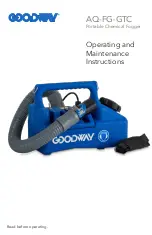
English
39
4.3 Adapting the leg
support assem-
blies/footplate
1. Set the
leg support assemblies
and
the
footplate
(1, 6, 11) to the expected
positions before accommodating the
patient.
- Loosen fixation screws (8) to adjust
the
footplate
(11) to the length of the
patient's lower leg (Fig. C).
Loosen clamping lever (13) and
adapt the footplate's rotation and
height to the patient (Fig. D).
Loosen fixation screw (12) and adapt
the angle to the patient's foot (turn
the screw a few revolutions until the
footplate can be easily adjusted).
For
short patients
you can reverse
the footplate's bracket 180° (Fig. H)
to adapt the footplate to shorter
calves:
• Loosen clamping lever (13) and
remove the footplate (11).
• Loosen the fixation screws (12).
• Reverse the bracket 180°.
• Screw the footplate to the bracket
and tighten the clamping lever.
- To adjust the height of the
support
assemblies for calf (1) and thigh
(6)
, loosen clamping levers (2) and (7)
(Figs. E/F).
2. Place the patient’s leg on the carria-
ge and repeat the steps outlined
under 1 above to adjust the device
to the patient.
Note!
When reversing the footplate,
ensure that the pins below the
clamping lever engage with the
recesses in the bracket.
CAUTION!
Equipment damage –
Cover the leg
support assemblies
with disposable tissues
when
using ARTROMOT
®
-K1 classic
immediately after surgery.
This helps prevent discoloration.
Symbol 1:
Measurement of the
patient's femur length
from the grea ter
trochanter to the
knee joint cavity
Symbol 2:
Set the carriage to
the home position
(see 4.1) and adjust
it to the measured
femur length.
Symbol 3:
Adjust height of calf
and thigh support
assemblies. Adjust
the footplate to the
height and length of
the lower leg.
CAUTION!
Patient hazard –
Ensure that the rotational axes of
the CPM device and of the knee
joint coincide both in the vertical
and in the horizontal plane (Fig. G).
www.performancehealth.fr
















































